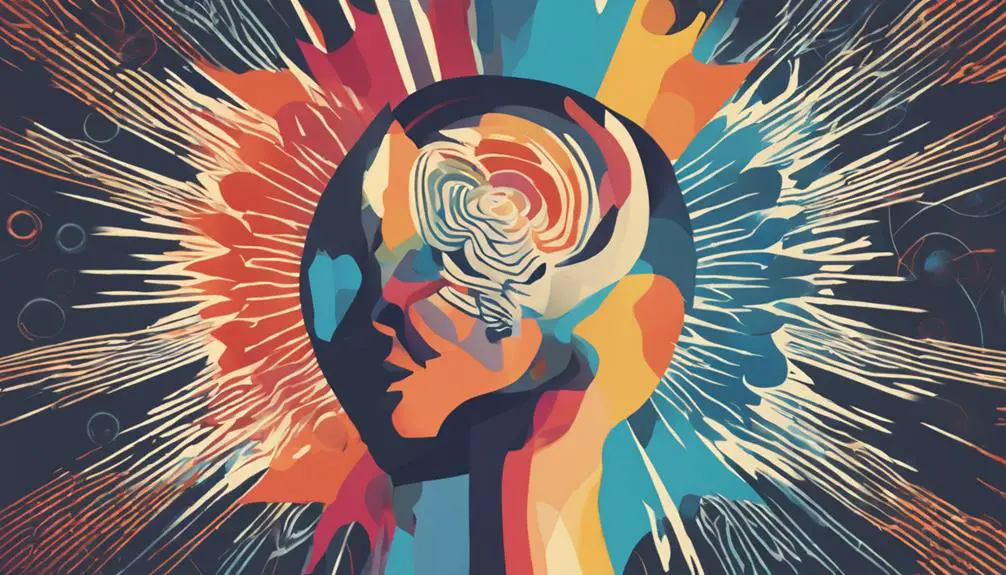Hypnosis Induction Techniques
Why Are NLP Techniques Effective for Hypnosis Induction?
August 10, 2016 - Hypnosis Induction Techniques
NLP techniques excel in hypnosis induction by customizing interventions, establishing rapport, and leveraging anchors and language patterns for subconscious communication. These methods enhance receptivity, trust, and the effectiveness of suggestions, ultimately leading to successful hypnosis outcomes. The tailored approach in NLP aligns with individual communication styles and cognitive processes, laying a strong foundation for profound hypnotic experiences.
Benefits of NLP for Hypnosis

One of the key advantages of utilizing Neuro-Linguistic Programming (NLP) techniques in hypnosis induction is the ability to tailor interventions based on individual communication patterns and cognitive processes. NLP techniques provide a structured framework that allows hypnotherapists to effectively communicate with the subconscious mind of the client, facilitating deeper levels of trance and enhancing the overall effectiveness of the hypnotic induction process.
By understanding and utilizing NLP techniques, hypnotherapists can adapt their language patterns, sensory modalities, and pacing to match the client's unique way of processing information. This personalized approach helps create a stronger rapport between the hypnotherapist and the client, leading to increased receptivity to suggestions and a more profound hypnotic experience.
Furthermore, NLP techniques can assist in identifying and overcoming client resistance or barriers to entering a hypnotic state. Through techniques such as reframing, anchoring, and mirroring, hypnotherapists can address subconscious conflicts and facilitate a smoother induction process.
Building Rapport With NLP
Utilizing Neuro-Linguistic Programming (NLP) techniques in hypnosis induction can significantly enhance the establishment of rapport between the hypnotherapist and the client. NLP emphasizes the importance of rapport building through effective communication skills. By employing NLP techniques such as mirroring and matching, the hypnotherapist can create a harmonious connection with the client, leading to a deeper level of trust and receptivity during the hypnotic process.
Rapport building in NLP involves mirroring the client's verbal and non-verbal cues, such as tone of voice, body language, and pacing of speech. This mirroring technique helps the client feel understood and builds a sense of familiarity and comfort.
Additionally, NLP communication skills like active listening, using language patterns that resonate with the client, and maintaining eye contact further strengthen the rapport between the hypnotherapist and the client.
Anchoring Techniques in Hypnosis

Anchoring techniques in hypnosis play a crucial role in establishing and reinforcing desired states or responses in the client through the association of specific stimuli with corresponding emotional or psychological states. These techniques leverage the principle of classical conditioning to create powerful triggers that can evoke specific responses when activated.
Visual imagery is often utilized in anchoring, where the hypnotist guides the client to vividly visualize a particular scenario or emotion while simultaneously introducing a unique anchor, such as a touch on the shoulder or a specific word.
Sensory overload can also be employed to enhance anchoring effects in hypnosis. By overwhelming the client's senses with various stimuli, the hypnotist can intensify the association between the anchor and the desired state. This heightened state of sensory perception can deepen the client's receptiveness to suggestions and facilitate a more profound hypnotic experience.
Through strategic use of visual imagery and sensory overload, anchoring techniques in hypnosis can significantly contribute to the effectiveness of inducing and maintaining hypnotic states.
Language Patterns in Hypnosis
Effective communication in hypnosis involves the deliberate use of specific language patterns to influence a client's subconscious mind and facilitate desired therapeutic outcomes. Linguistic techniques play a crucial role in inducing trance states, where individuals are more receptive to suggestions and can explore their inner experiences more deeply.
One commonly used language pattern in hypnosis is the Milton Model, developed by Dr. Milton Erickson, a renowned psychiatrist. This model utilizes vague language, embedded commands, and presuppositions to bypass conscious resistance and access the subconscious mind. By employing presuppositions, the hypnotist can subtly introduce ideas without directly stating them, allowing for a smoother acceptance by the client's subconscious.
Another important linguistic technique is the use of metaphors. Metaphors can be powerful tools in hypnosis as they engage the client's imagination and emotions, making the therapeutic process more profound and impactful. Through carefully crafted stories and analogies, hypnotists can convey complex ideas and evoke deep insights within the client's subconscious mind, fostering transformative changes.
Submodalities in Hypnosis

Submodalities in hypnosis refer to the specific sensory components of an individual's internal representations, such as visual, auditory, kinesthetic, olfactory, and gustatory elements, that play a significant role in shaping their subjective experiences during trance states. During hypnosis, exploring these submodalities can enhance the effectiveness of hypnotic inductions and suggestions. By understanding how an individual internally represents sensory information, a hypnotist can tailor their language patterns and techniques to resonate with the person's unique sensory experiences.
Submodalities exploration in hypnosis involves identifying the qualities and characteristics of each sensory modality. For example, in the visual submodality, details like color, brightness, size, and location are crucial. Understanding how these elements are encoded internally allows for the creation of more vivid and compelling visualizations during hypnosis.
Similarly, auditory submodalities can include volume, pitch, speed, and tone, which can be adjusted to deepen trance states and enhance relaxation.
Strategies for Hypnotic Suggestions
How can hypnotists strategically structure their suggestions to maximize the efficacy of hypnotic inductions?
Inducing trance is a fundamental aspect of hypnosis, and utilizing imagery is a powerful strategy for enhancing the effectiveness of hypnotic suggestions. By incorporating vivid and detailed imagery into their suggestions, hypnotists can tap into the subconscious mind more effectively, as the brain responds strongly to visual stimuli.
When crafting hypnotic suggestions, it is essential to use language that paints a clear picture in the individual's mind, engaging their senses and emotions to deepen the trance state.
Furthermore, hypnotists can enhance the impact of their suggestions by incorporating multisensory imagery, such as describing not only how something looks but also how it feels, sounds, and even smells.
This comprehensive approach to utilizing imagery can create a more immersive hypnotic experience, leading to greater receptivity to suggestions and a deeper level of trance.
Integrating NLP With Hypnosis

Incorporating Neuro-Linguistic Programming (NLP) techniques into the practice of hypnosis can significantly enhance the effectiveness of hypnotic inductions. NLP offers a diverse set of communication techniques that can be seamlessly integrated into hypnosis sessions to amplify rapport-building, sensory acuity, and linguistic patterns. By leveraging NLP principles, hypnotists can tailor their language patterns to match the client's unique communication style, leading to deeper trance states and heightened suggestibility.
Neuro linguistic programming emphasizes the importance of understanding how individuals process information through their senses and language. By incorporating NLP strategies such as mirroring, pacing, and leading into hypnosis inductions, practitioners can establish a stronger connection with their clients, fostering trust and receptivity to suggestions.
Additionally, NLP techniques enable hypnotists to calibrate their language to match the client's internal representation system, enhancing the effectiveness of hypnotic suggestions.
Frequently Asked Questions
Can NLP Techniques Be Used for Self-Hypnosis Induction?
Self-hypnosis benefits individuals by fostering self-awareness and personal development. When integrated with NLP techniques, individuals can enhance their self-hypnosis practice, leading to improved focus, relaxation, and positive behavioral changes for personal growth.
How Can NLP Help in Overcoming Resistance to Hypnosis?
When facing resistance to hypnosis, NLP techniques can be applied effectively. Utilizing specific resistance techniques and tailored self-hypnosis strategies can help individuals overcome barriers and enhance the success of hypnotic inductions.
Are There Specific NLP Techniques for Enhancing Suggestibility?
In enhancing suggestibility for hypnosis, specific NLP techniques like embedded commands, reframing, and hypnotic language patterns can aid in subconscious programming. Deepening trance through anchoring and rapport building also plays a crucial role in suggestibility.
Can NLP Be Effective for Group Hypnosis Sessions?
Group dynamics play a crucial role in determining the success of NLP techniques in group hypnosis sessions. Effective audience engagement is key to leveraging NLP strategies for inducing hypnosis in a collective setting, fostering a conducive environment for suggestibility.
How Can NLP Techniques Be Adapted for Online Hypnosis Sessions?
In virtual sessions, NLP techniques can be adapted for online hypnosis by incorporating guided imagery, anchoring, and pacing techniques through verbal cues and visual aids. Remote adaptation enhances accessibility and effectiveness in hypnosis induction.
Conclusion
In conclusion, the utilization of NLP techniques in hypnosis induction has shown to be effective in building rapport, anchoring desired states, utilizing language patterns, manipulating submodalities, and delivering hypnotic suggestions.
The integration of NLP with hypnosis provides a comprehensive approach to inducing trance states and facilitating deep therapeutic changes in individuals.
The empirical evidence supports the efficacy of NLP techniques in enhancing the effectiveness of hypnosis for various therapeutic purposes.
